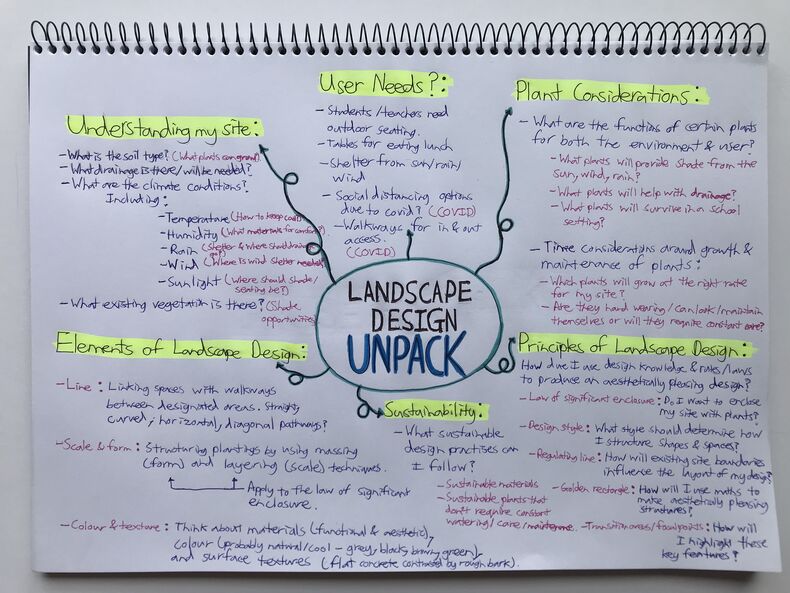- Device
- Internet
- Notebook or digital portfolio for brainstorming
1
Investigating Potential Sites
The aim of this lesson is to unpack the elements and principles of design and context considerations of landscape design. By the end of this lesson, you should have an understanding of the basic conventions and considerations you need to make, informing later research and design decisions.
You Need
Think About
Let's do something!
a. If you are unsure of important context considerations, research into them (find helpful resources below)
b. Research into the elements and principles of landscape design (find helpful resources below)

Think about context considerations and the elements and principles of design
Take key points from your research and create a mega brainstorm reflecting important context considerations you need to make and the elements and principles of landscape design you must implement

Chris's mega brainstorm
Citations
ENH1112/EP375: Landscape Design: Ten Important Things to Consider. (2018). Retrieved February 3, 2022, from Ufl.edu website: ENH1112/EP375: Landscape Design: Ten Important Things to Consider (ufl.edu)
Hardware, M. (2019, July 25). Curti’s Landscaping, Inc. | Curti & Associates, Ltd. Retrieved February 3, 2022, from Curti’s Landscaping, Inc. website: The 5 Basic Elements of Landscape Design (curtilandscaping.com)
8 Landscape Design Principles - Garden Design. (2021). Retrieved February 3, 2022, from GardenDesign.com website: 8 Landscape Design Principles | Garden Design
Remember that functional and aesthetic considerations include:
"ENH1112/EP375: Landscape Design: Ten Important Things to Consider,” 2018)
(Hardware, 2019)
(“8 Landscape Design Principles - Garden Design,” 2021)